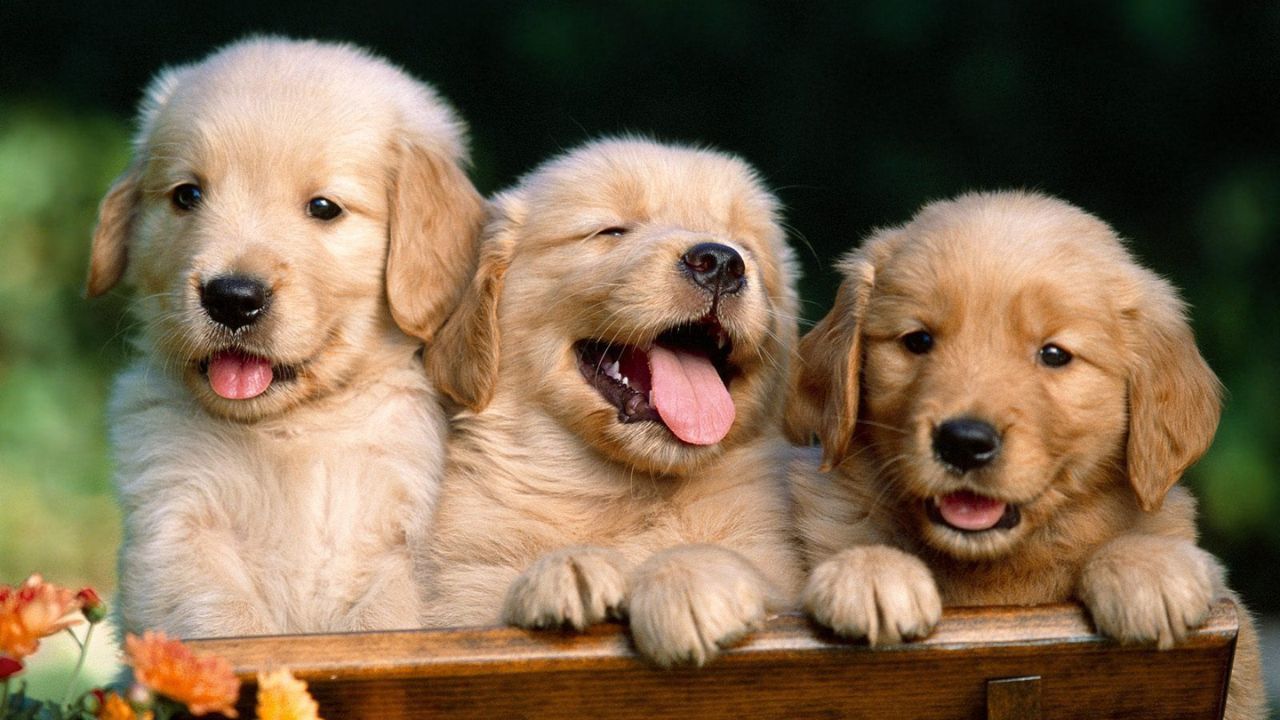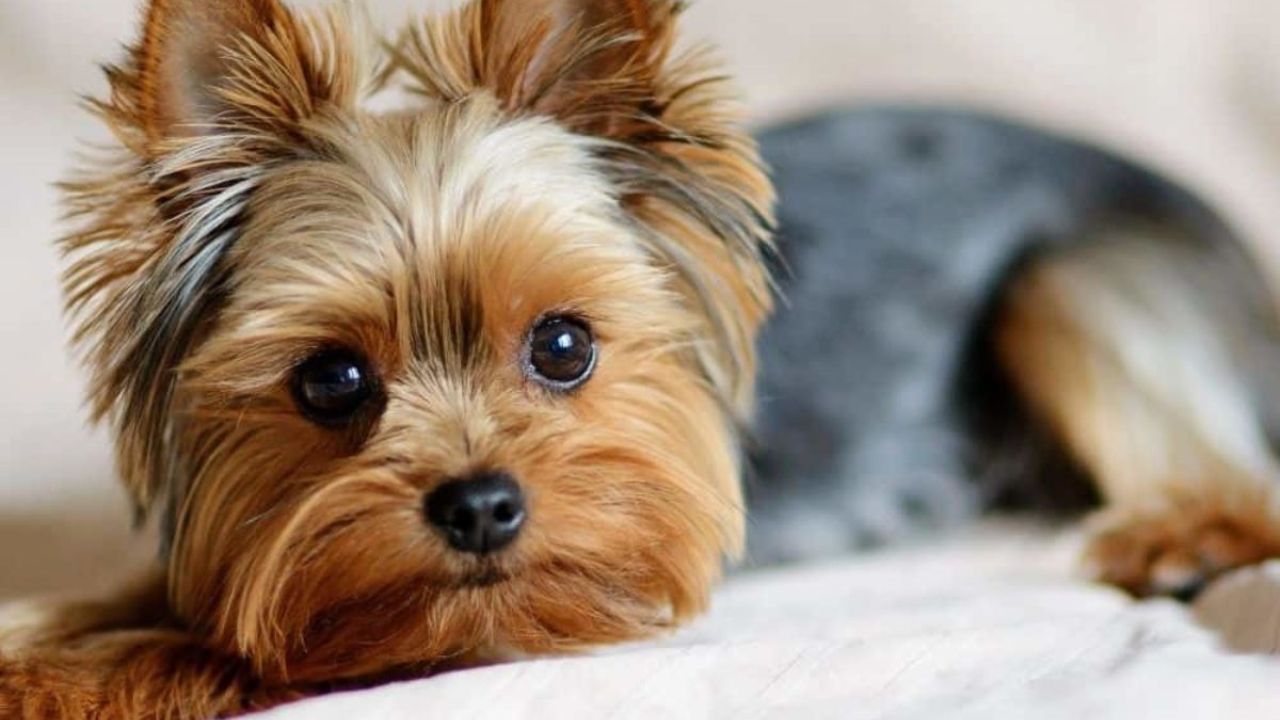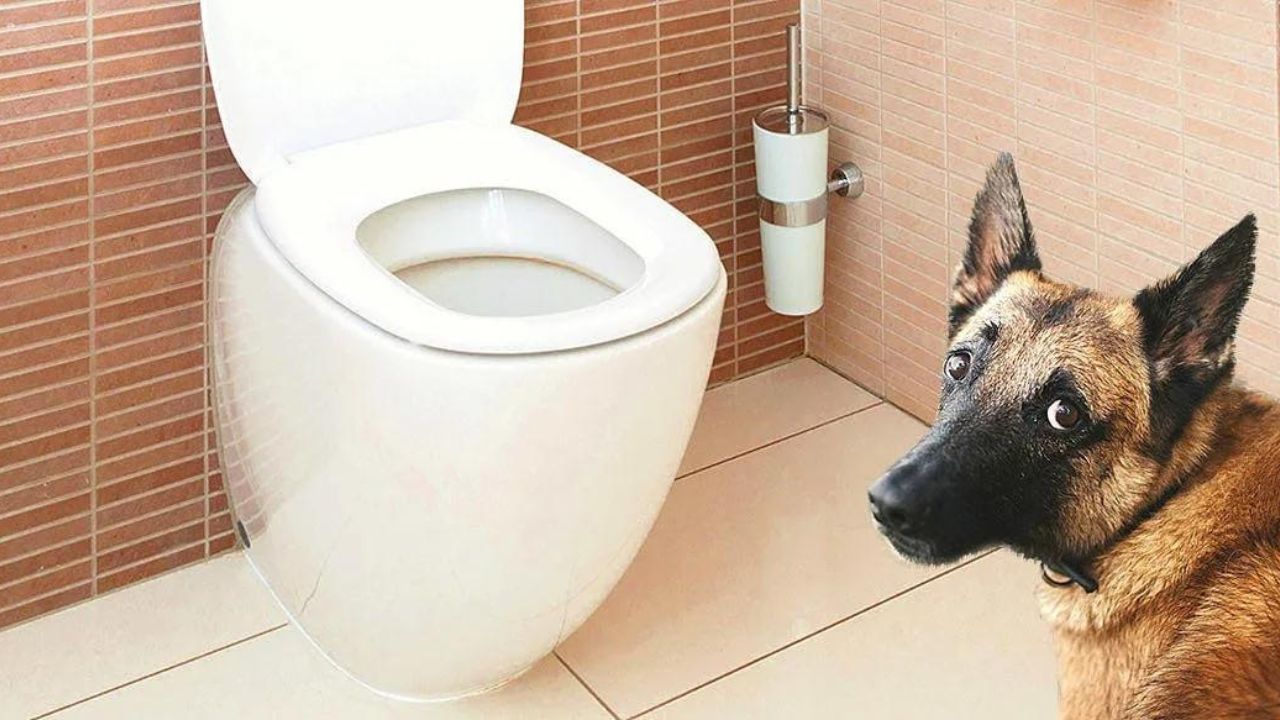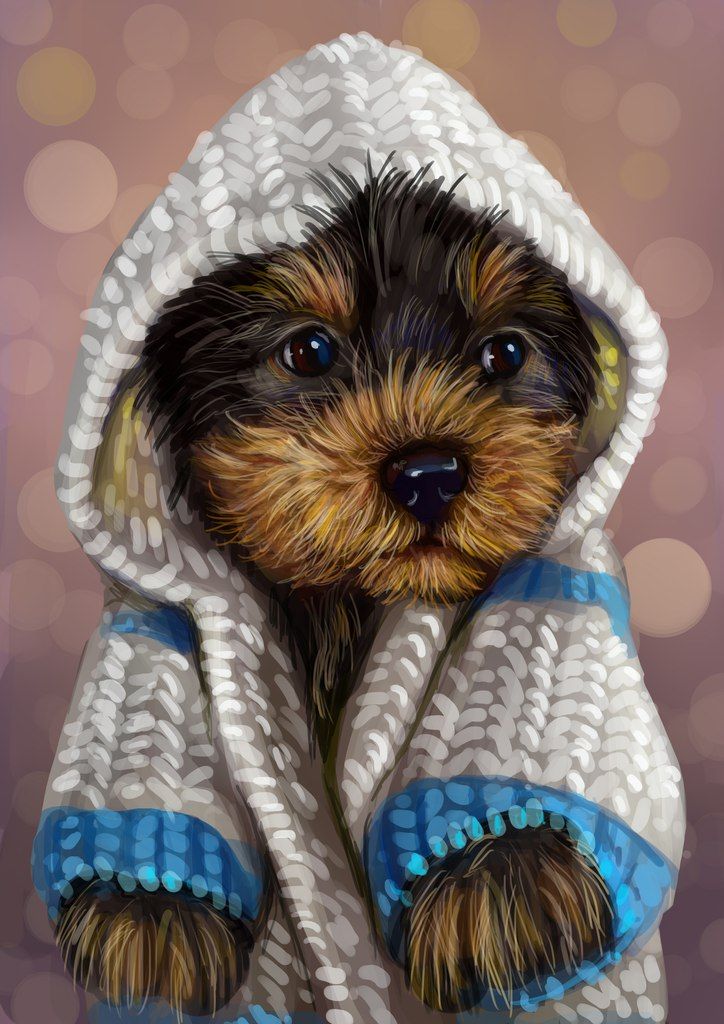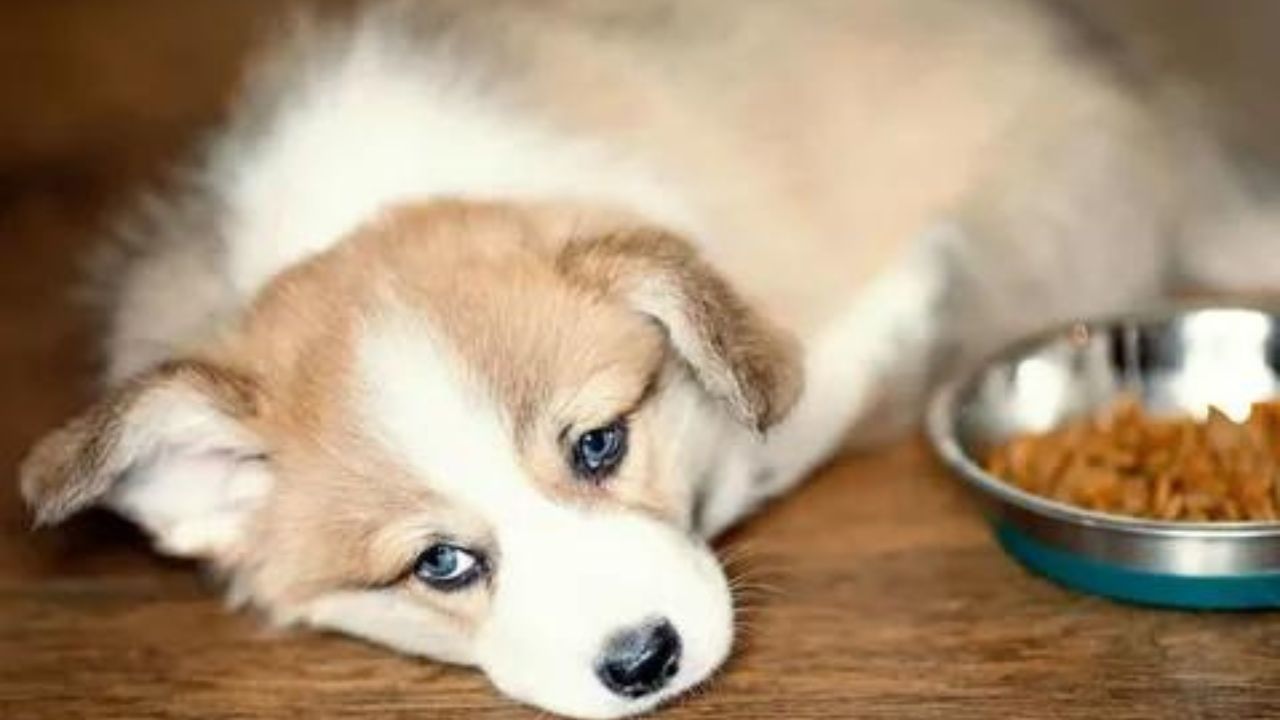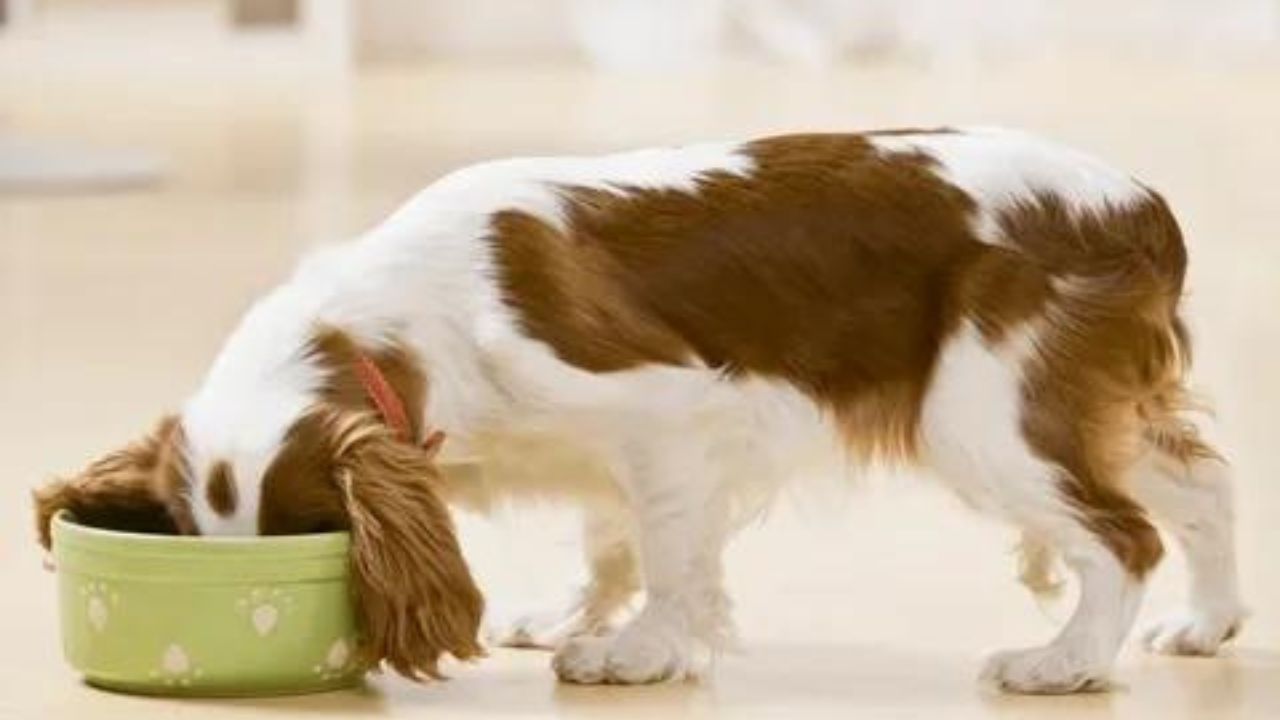
Yorkshire, or Yorkies for short, are one of the world’s most popular toy dog breeds. They are beloved for their cute looks, aggressive personalities, and loyal nature. One aspect of Yorkies that often piques people’s interest is their coat colour.
While there are four standard Yorkie colours there are also rare ones that are highly sought after by breeders and pet owners. This blog post will explore the different Yorkie colours and what makes the rarest colour so coveted.
We will also discuss the controversy surrounding breeding for rare colours and the importance of ethical breeding practices.
Standard Yorkie Colours
The Yorkshire Terrier breed standard recognizes four main coat colours: black and tan, blue and gold, blue and tan, and party.
Black and Tan: This is the most common Yorkie colour. The coat is dark, shiny black on the body and legs, with rich, tan markings on the face, chest, and legs.
Blue and Gold: The blue and gold Yorkie has a steel blue or dark grey coat on the body and legs, with golden tan markings on the face, chest, and legs.
Blue and Tan: This colour is similar to blue and gold, but with less gold and more black in the coat. The body and legs are bluish-grey, and the tan markings are on the face, chest, and legs.
Parti: The party colour is a white base with black or blue markings. The markings can be solid or broken and distributed throughout the coat in various patterns.
These four colours are the most common and accepted in the breed standard. However, some Yorkie enthusiasts consider other colours rare and highly coveted.
Rare Yorkie Colours
While the four standard colours are the most common, other Yorkie coat colours are rare and highly sought after.
Chocolate: A chocolate-coloured Yorkie has a deep brown coat similar to chocolate. This colour is produced by a recessive gene and is relatively rare, making chocolate Yorkies highly desirable.
Merle: Merle is a pattern in the coat rather than a colour. It produces a mottled or marbled effect with patches of different colours and shades.
This pattern can occur in various colours, including blue, silver, and gold. However, breeding for merles is controversial because it can lead to health issues.
Blonde: A blonde Yorkie with a light, the creamy-coloured coat is often mistaken for white. This colour is also produced by a recessive gene and is considered rare in the breed. Some Yorkie enthusiasts and breeders highly prize these rare colours, and they can command a high price tag.
However, breeding for rare colours can also lead to health issues, as some breeders may prioritize colour over health and temperament. Choosing a responsible breeder who puts their pets’ health and welfare first is important.
The Rarest Yorkie Colour
Of all the rare Yorkie colours, the rarest is the chocolate merle. This colour combines the chocolate and merle genes and produces a striking coat that mixes chocolate brown and a marbled or mottled pattern.
Breeding for chocolate merle is controversial and often discouraged by reputable breeders and breed organizations. Breeding two merle dogs together can produce a high likelihood of producing puppies with health issues, such as hearing and vision problems.
Additionally, breeding for rare colours can lead to unethical breeding practices and can prioritize physical appearance over the health and well-being of the dogs. Despite the controversy surrounding the breeding of chocolate merle Yorkies, they remain highly coveted by some pet owners and breeders.
Because they are so rare, they can command a high price tag and be difficult to find. It’s important for anyone considering getting a Yorkie, regardless of colour, to do their research and choose a responsible breeder who emphasizes the health and welfare of their canines.
How Old Must a Yorkshire Terrier Be to Change its Colour?
A Yorkshire Terrier’s coat colour does not change as the dog ages. Once a Yorkie’s coat colour has fully developed, it will remain the same for the rest of the dog’s life.
That being said, a Yorkie’s coat colour can appear to change slightly due to factors such as sunlight, nutrition, and grooming.
For example, excessive exposure to sunlight can cause a black coat to turn reddish-brown over time. Similarly, a poor diet or lack of grooming can make a coat appear dull and faded.
It’s important to note that these changes are not due to a genetic shift in the dog’s coat colour but rather external factors that affect its appearance. The genes determine the colour of a Yorkie’s coat it inherits from its parents, and these genes remain the same throughout the dog’s life.
Why is Yorkshire Terrier So Unique?
The Yorkshire Terrier is a unique breed for several reasons:
Small size: Yorkshire Terriers are one of the smallest dog breeds, typically weighing 4-7 pounds. Their small size makes them a popular choice for those living in small apartments or those who want a companion to take wherever they go.
Beautiful coat: The Yorkshire Terrier’s long, silky coat is one of its most distinctive features. Their coat requires regular grooming and upkeep to prevent matting, making them one of the most elegant-looking breeds.
Intelligence: Yorkshire Terriers are highly intelligent and trainable. They can learn various commands and are often used in obedience competitions.
Bold personality: Despite their small size, Yorkshire Terriers have bold and confident personalities. They are not afraid to stand up to larger dogs and can be quite protective of their owners.
Long lifespan: Yorkshire Terriers have a relatively long lifespan, with some living up to 15 years or more. This makes them long-term companions for those who want a loyal and loving dog to share their life.
What Colour Yorkie is The Most Expensive?
The cost of a Yorkie can vary depending on several factors such as age, pedigree, breeder, and coat colour. However, traditionally, the most expensive Yorkshire Terriers are those with a blue and tan or blue and gold coat.
The blue colour in Yorkies results from a genetic mutation that dilutes the black pigment in their coat, giving it a greyish-blue hue. This mutation is rare, so blue and tan Yorkies are more expensive than other coat colours.
It’s worth noting that while blue and tan Yorkies are often more expensive, the cost of a dog should not be the only factor considered when choosing a pet. Choosing a reputable breeder who prioritizes the health and well-being of their dogs, regardless of their coat colour, is important.
Health Risks When Breeding Blonde Yorkies
Breeding blonde Yorkies (or Yorkshire Terriers) can carry certain health risks, just like breeding any other type of dog. Some of the health risks that can be associated with breeding blonde Yorkies include:
Liver shunts: Blonde Yorkies can be at an increased risk of liver shunts, abnormal blood vessels bypassing the liver. Toxins may accumulate and enter various symptoms and medical problems in the bloodstream.
Skin problems: Yorkies with blonde coats can be more prone to skin problems, such as allergies and infections. This can be due to a genetic predisposition to skin issues, and lighter-coloured dogs are more susceptible to sunburn and other skin damage.
Vision problems: Blonde Yorkies may be at a higher risk of certain eye problems, such as cataracts and retinal dysplasia. This can lead to vision loss and other complications.
Overall health concerns: Yorkies, in general, are prone to certain health issues, such as dental problems, luxating patellas, and respiratory issues. Breeding blonde Yorkies do not necessarily increase the risk of these issues, but it is important to be aware of them when breeding any Yorkie.
If you are considering breeding blonde Yorkies, working with a trustworthy breeder who puts their dogs’ health and welfare first is important. This can help minimize the risk of health issues in the parent dogs and their offspring.
Beware of Rare Colored Yorkies
When buying a Yorkie, knowing the potential risks associated with rare-coloured Yorkies is important. While these dogs can be unique and visually striking, breeding for rare colours can sometimes come at the cost of the dog’s health.
Some breeders may try to intentionally breed for rare colours, such as chocolate, party, or merle, without considering the potential health risks that can come with this breeding. These health risks can include:
Coat and skin problems: Some rare coat colours can be associated with skin problems, hair loss, and an increased risk of sunburn and other skin damage.
Eye problems: Certain coat colours, such as merle, can be related to a higher risk of eye issues, including deafness, blindness, and other vision problems.
Overall health issues: Breeding for rare colours can sometimes result in health problems that are not necessarily related to the dog’s coat colour. This can include hip dysplasia, dental problems, and respiratory issues.
To ensure you’re getting a nutritious dietYorkie, it is important to work with a trustworthy breeder who places importance on the health and welfare of their dogs.
A good breeder will focus on breeding for sound temperament and overall health rather than just producing rare-coloured dogs. Remember, a dog’s health and well-being should always be the top priority, regardless of coat colour.
conclusion
In conclusion, the Yorkshire Terrier is a unique breed with many distinctive traits, including small size, beautiful coat, intelligence, bold personality, and long lifespan.
While rare coat colours like blonde, chocolate, party, and merle may be visually striking, it’s important to know the potential health risks associated with breeding for these colours.
When looking to buy a Yorkie, it’s essential to work with a reputable breeder who prioritizes the health and well-being of their dogs and focuses on breeding for sound temperament and overall health rather than just rare coat colours.
By prioritizing the dog’s health, you can ensure that you have a happy and healthy companion to share your life with.

